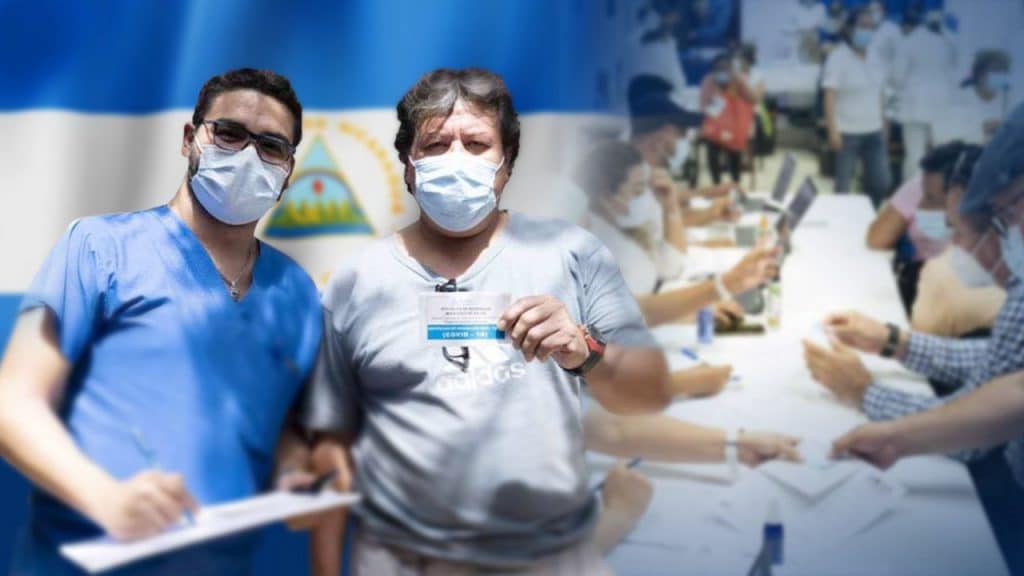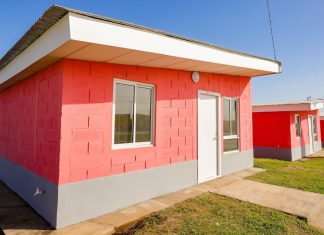The Western media covered up their success.
BY JOHN PERRY

In Nicaragua, the third poorest country in Latin America, people who don’t work don’t eat. Three quarters of jobs are in small businesses or in the informal economy. So, when the first case of Covid was diagnosed on March 18, 2020, Nicaraguan President Daniel Ortega knew that shutting down the economy would be catastrophic.
He was under pressure from all sides to introduce strict restrictions. Among Nicaragua’s neighbors, El Salvador registered its first case on March 18 and imposed a lockdown two days later; Honduras did the same; Costa Rica imposed a blockade on March 16 and three days later closed its borders completely. These neighboring governments, all politically hostile to Nicaragua, insisted that it join in shutting down the regional economy.
Within Nicaragua, vociferous opposition groups and the media were also calling for the shutdown of the economy. But the country had barely recovered from a violent confrontation in 2018 between these opposition groups and the socialist Sandinista government of Ortega, which left more than 200 dead. A blockade would only put more pressure on the divided nation.
When Ortega publicly declared there would be no lockdown, most Nicaraguans quietly accepted that while his decision might be risky, he had few options. Inevitably, the right-wing opposition accused him of denying the pandemic. Worse yet, they spread fear and suspicion with their predictions that the health service would collapse. A group of opposition experts projected 120,000 covid cases for June; a local right-wing media channel, 100% Noticias , topped that by saying that 23,000 Nicaraguans would be dead within a month . Once the government started producing Covid statistics , a rival «citizen observatory» was created, which never declared its membership or funding source. It began producing weekly reports that questioned the government’s figures (although the fine print on its website reveals that its own statistics were based on social media reports and even «hearsay»). Many Nicaraguans, including some I knew, were so afraid to go to the hospital when they developed covid symptoms that they left it too late.
This dishonest narrative soon spread abroad, where Nicaraguan opposition figures enjoy good international media contacts. On April 4, BBC Mundo stated that the Ortega government had not taken “any measure” against the threat of the virus. He invented a media trope: Ortega’s “long absence” from public view. Two days later, the New York Times asked “Where is Daniel Ortega?” and said his government had been «widely criticized for its cavalier approach.» The Guardian joined in the chorus , stating that Ortega was “not in sight”, adding four days later that the “authoritarian” Ortega was one of four world leaders denying the virus. The Washington Post said that Ortega had «disappeared,» leaving a government that operated with a «laissez-faire approach» to the pandemic. On April 6, The Lancet published a letter calling Nicaragua’s response to Covid «perhaps the most erratic of any country in the world to date.» By May, according to the New York Times , Nicaragua—“one of the last to reject the strict measures introduced globally”—had become a country of “burials at midnight.”
More: El Salvador, Costa Rica and Nicaragua with the best Government Management in the Americas
The lies of the liberal media could not have been further from the truth. The Ortega government had prioritized health spending since it returned to power in 2007, raising it to 19% of the national budget by 2020, one of the highest levels in the world . Nicaragua was also one of the first nations in the region to establish its Covid strategy, issuing a joint protocol with the Pan American Health Organization (the Americas branch of the WHO) on February 9. Its 36,000 health workers had received training on how to deal with the virus before the first case arrived. One hospital was designated to treat respiratory illnesses only and 18 more were equipped with Covid isolation rooms . The health “brigades” worked locally, eventually making 5 million house-to-house visits to educate people, identifying potential covid cases, and countering misinformation. That’s about four visits per household on average.
So much for taking “no action at all” against the virus. A «track and trace» system was put in place and health checks were carried out at border crossing points months before similar measures were taken in the UK or US. As tourism ground to a halt, hotels and restaurants closed, many other businesses remained open with precautions. The use of masks, never required by law, became almost universal. Private schools closed but public schools remained open, with voluntary attendance, because many children depend on free school meals that are served to all students.
Which was the result? There was a sharp spike in Covid cases and deaths between May and July 2020, but in August the numbers gradually fell, although they peaked again in mid-2021. My local hospital, one of 19 equipped for Covid, was able to hold a small celebration in August 2020 for discharged patients.
None of this initial success dampened the criticism. The Lancet article praised the lockdown policies of El Salvador and Honduras. In the first, President Nayib Bukele forced people into self-isolation, offering a $300 subsidy per family, prompting massive unregulated queues and then loud protests outside government offices. In some areas his blockade was reportedly enforced by gangs with baseball bats . Meanwhile, in Honduras, a «militarized quarantine» led to police violence, more than 1,000 arrests and the seizure of almost 900 vehicles, according to the human rights group COFADEH. Honduran schools remained closed for two years. However, both countries reported higher infection levels than Nicaragua. So did Costa Rica, which endured the fiercest barrage of criticism of its neighbor and for many weeks even prevented the transport of food between the two countries.
More: For Corporate Media, Sandinistas’ Electoral Success Proves Their Repressiveness
The international media did not question whether the closures were in the best interest of Nicaragua or if they were feasible. The truth only came to light towards the end of the pandemic, when the World Health Organization , The Economist and Amnesty International produced differing estimates of Covid -related excess deaths. It all showed that, compared to the rest of Latin America (and indeed the UK and US), Nicaragua had done relatively well. The WHO ranked its level of excess deaths 14th out of 19 countries in the region, better than its four immediate neighbors.
When it comes to vaccines, Nicaragua was initially at a disadvantage since, unlike its neighbors, it did not receive early donations of vaccines from the US or China. However, once the supplies arrived through the WHO Covishield mechanism , they moved quickly. Its community health teams have ensured that 86% of the population is fully vaccinated, the highest rate in Central America , and 91% have received at least one dose. All of this was accomplished without the coercive vaccination mandates of many Western countries.
You can read: Nicaragua celebrates its Municipal Elections 2022
By refusing to close, President Ortega saved his country from economic disaster. Nicaragua’s economy has recovered quickly from the pandemic, with GDP growth of more than 10% in 2021 and a forecast of 4% this year. The government resumed its investment programs and now has 24 hospitals built or about to be finished, in addition to investing in renewable energy, paving rural roads, remodeling schools and achieving the highest level of electricity coverage in the region.
Latin America’s experience with Covid was very diverse: Brazil, Mexico and Peru were, along with the United Kingdom and the United States, among the 20 countries with the highest levels of Covid -related deaths . By contrast, according to Johns Hopkins University, Nicaragua had one of the lowest death rates per 100,000 people in the world: 189 compared to 276 for the UK and 374 for the US. But the international media has not done so. nothing to correct the unbalanced information of the first months of the pandemic. To date, no one has asked why Nicaragua’s performance was better and what can be learned from its experience. It might be worth finding out before the next pandemic.





